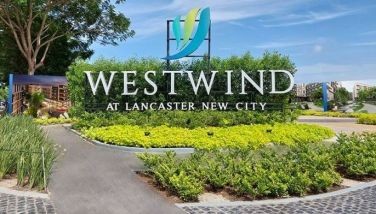Nat’l historical body asked to intervene in tree-cutting row
CEBU, Philippines - The Philippine Earth Justice Center will ask the National Historical Commission (NHC) to issue a cease and desist order against the cutting of trees to give way for the Naga-Carcar road in southern Cebu.
Lawyer Liza Osorio, co-founder of PECJ, said the commission has the power to issue such order against the Department of Environment and Natural Resources (DENR) and the Department of Public Works and Highways (DPWH).
She said that under the law, heritage trees are entitled of protection.
Osorio said the group's other co-founder, Atty. Gloria Ramos, will personally go to the commission's office in Manila to ask for the order.
Osorio also said they will also demand for the DENR to provide them with a complete inventory of heritage trees in Naga and Carcar that are subject to cutting and earth balling.
"We have already sent our formal letter to DENR about our request but we were told nga ilaha pa daw huna-hunaon kung hatagan ba ni nila," Osorio said.
Osorio clarified they have nothing against the proposed infrastructure project.
"Di mi oppose sa project. Ang amoa lang nga these heritage trees dili maapektuhan," she said.
The proposed P1.25 billion project was initiated by then former First District Representative Eduardo Gullas.
Earlier, three barangays in Naga - Tinaan, Inuburan and Langtad - have issued barangay council resolutions and certification interposing no objection to the move to cut and earth-ball the trees.
DENR-7 Executive Director Isabelo Montejo said the barangay certification is one of the conditions for the issuance of a clearance from the DENR central office and the special tree cutting permit (STCP) issued to the Department of Public Works and Highways.
Atty. Aaron Pedrosa, secretary-general of the Freedom from Debt Coalition-Cebu, said the Carcar City government has never given consent to the tree cutting and this was made known to the DENR.
"DENR never responded. The Carcar lgu was surprised to learn that DENR issued a permit. This only proves that securing consent from communities and lgus is only an afterthought as DENR would push through anyway," Pedrosa said.
Pedrosa added that aside from violating the Environmental Impact Assessment process, DENR and DPWH can be held liable for transgressing heritage laws.
Montejo explained this does not mean that DPWH 7 can now proceed with the cutting and earth-balling, as DPWH should comply with the other mandatory requirements.
He indicated the replacement of at least 13,800 of native and indigenous seedlings should be undertaken first before the actual cutting.
Montejo earlier emphasized that the eight or now seven acacia-trees (the other one fell down two months, ago which caused a ten-hour traffic) to be cut down are in an advanced stage of decay and could no longer be rehabilitated or applied with tree surgery.
He said that these trees are very dangerous or critical if they would continue to stay there as they pose danger to life and property. Besides, he said, the older the trees, the lower their capacity to absorb carbon.
"That's why we want to have a copy of the inventory, so that we can really assess the trees. Because even if these trees are already decayed, there are some ways to preserve it," Osorio added.
DENR-7 information officer Eddie Llamedo said that based on the permit signed by Montejo as cleared by DENR Undersecretary for Field Operations Demetrio Ignacio Jr., some 42 trees, including the eight century-old acacia trees that are in an advanced stage of decay and clearly posing danger to life and property, will be removed or cut down.
Llamedo said at least 96 trees with 25 centimeters and below in diameter should be earth-balled while 16 acacia trees should not be cut down as they will be subjected to further tree surgery, correct pruning and rehabilitation of decayed branches and stubs.
At least 155 trees with an aggregate volume of 192.77 cubic meters of different species will be affected on the account of the May 11 and 16 of last year's inventory.
Llamedo added that of the 155 trees, 25 are century-old acacia trees with a diameter ranging from 92 centimeters to 226 centimeters. Of the 25, nine were considered defective and hazardous.
Gullas earlier said that the P1.25 billion Naga-Carcar road project will benefit not just Cebuanos but people from Negros and Bohol that use the road to reach Cebu City.
"The benefits are not only for Cebu province but inter-regional and intra-regional influence," Gullas said.
PEJC said that trees render valuable ecosystem services, which humans take for granted and we forget that without the trees, our quality of life will be affected.
PEJC added that trees are important because they produce oxygen, clean the soil, control noise pollution, slow storm water runoff, clean the air, act as windbreaks, fight soil erosion, and increase property values, among others.
Meanwhile, at least 50 of Ramos' law students from the University of Cebu held a "Save the Heritage Trees" caravan yesterday for their Environmental Law subject. Most of the second year law students are volunteers at PECJ.
The students gathered at the university and proceeded to Carcar to meet with Carcar City Councilor Roger Montesclaros, vice chairman of the committee on environment of the City Council.
Osorio said the Council is bent on passing a resolution for DENR to provide the latter an inventory of the heritage trees in the city that will be affected, among others.
In line with this controversy, a meeting is called for by DENR-7 to be attended by DPWH 7, the project manager or contractor, local government of Naga City, and other stakeholders today at the Community Environment and Natural Resources in Cebu City.
Osorio further said that PEJC is scheduled to have a dialogue with Vice Governor Agnes Magpale today on the said matter. — /JMO (FREEMAN)
- Latest























